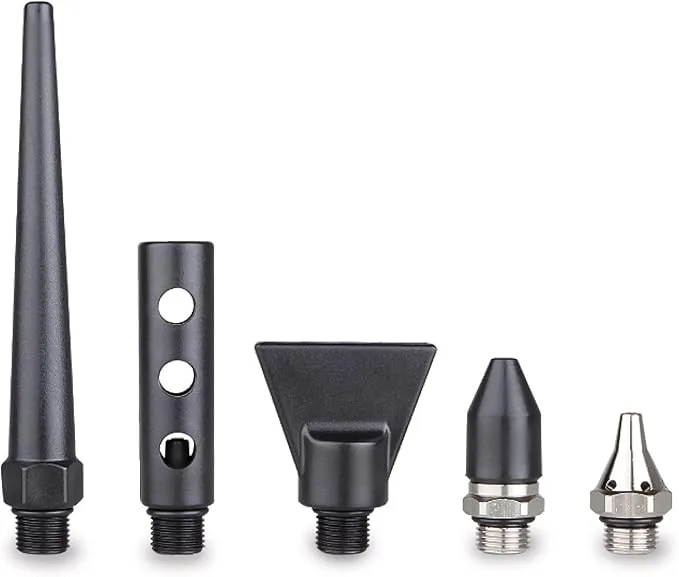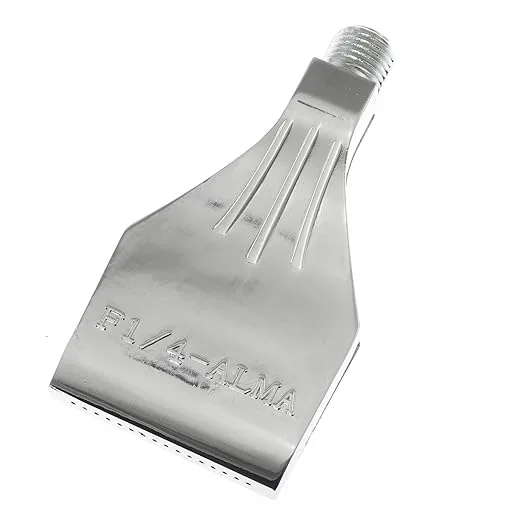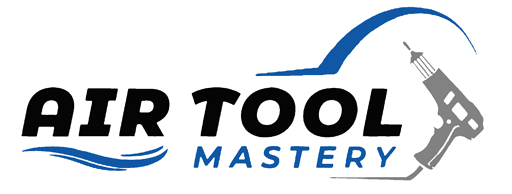Air nozzles are ideal for drying, blowing, cooling and removing moisture from the surface. Such tasks exist in the automotive industry, light and food industries, in printing houses and many other areas. Pneumatic nozzles mainly work with compressed air, but also with dry steam, carbon dioxide and nitrogen. The right choice of an air nozzle will make your production quiet and efficient and, of course, safe. It will also help reduce electricity costs.

In this post, we’ll explore the various aspects of compressed air nozzles. We’ll find out what they are, what they are made of, how they work, what to look for when buying them, and much more. Let’s get started.
What are Compressed Air Nozzles?
Compressed air nozzles are specialized attachments that connect to an air compressor or other compressed gas sources and release pressurized air in a controlled manner. It is designed to produce a powerful flow with minimal use of compressed air at low noise levels. It gets used for a variety of tasks:
- Reduces the temperature of products and/or their parts;
- Removes moisture from the surface and ensures the drying of parts;
- Removes dust from the surface before painting in the automotive industry;
- Cleans and dries the surface of printed circuit boards;
- Removes chips and sawdust in the woodworking industry;
among many others.
How the air nozzle blowing and drying system works?
Air nozzles are used to solve problems that need a stable, uniform and most importantly powerful air flow. Where air or gas is a tool that increases the performance of lines, such as drinking water bottling lines. So, how does a pneumatic injector work?
The air, getting into the nozzle, moves through channels of a certain shape, forming an air stream at the outlet with high speed and impact force.
The air nozzle has a number of characteristics, namely spray angle, outlet diameter and air flow per minute. At the moment when the jet of air flies out of the nozzle, capturing atmospheric air. And the angle of dispersion of the air flow becomes larger.
It is worth noting that if the air nozzle has one nozzle for compressed air, then when working with the device, a lot of whistling and noise is created, which is very harmful to health.
Using an air nozzle with multiple air nozzles helps to significantly reduce compressed air consumption and noise levels.
Types of Nozzles Tips
In many manufacturing environments, various nozzle types meet specific application requirements. The goal is to select the nozzle that delivers optimal performance at the best operating cost.
Cone Shaped Air Nozzles

Cone-shaped air nozzles are efficient flow amplifiers. They’re primarily used for cooling due to their high flow/CFM compared to other nozzle types. These nozzles significantly reduce noise pollution in factories and support energy conservation efforts. By conserving air, cone-shaped nozzles lower compressed air costs. Their compact design and 10-dBA average noise reduction enhance workplace safety, meeting OSHA noise standards. These nozzles replace open pipes from 2 mm to 0.5 inches, saving up to 30% in compressed air use. Internal design variations affect the performance of these nozzles.
Air Mag Air Nozzles
Air Mag nozzles, with a unique bullet-shaped finned design, focus compressed and ambient air into a sharper laminar flow. This design produces the highest force per SCFM among bullet-shaped nozzles on the market. They consume minimal air, have lower noise levels, no whistling sound, and are made of a single rugged piece for added strength.
Their exit nozzle orientation boosts force/CFM by 10% over competitors. Air Mag Nozzles come in multiple sizes for various applications:
- 1/4″: Common size for air guns, usually attached to a ¼” pipe or hose for general applications.
- ½”: Designed for heavy-duty blow-off tasks, this size connects to a ½” pipe or hose and is widely used with larger air guns.
- 4, 5, and 6 mm: These smaller sizes fit copper tubes or smaller air guns, often with a 1/8″ adaptor for use with a 1/8″ pipe.
Flat Jet Air Nozzle

Flat jet nozzles, shorter than air knives, are compressed air chambers with higher force and flow designs. These are mounted on manifolds of varying sizes (typically holding 2, 4, or 6 units). Flat jet nozzles are ideal for applications needing stronger forced air than air knives provide, ensuring a powerful laminar flow and high force for blow-off, cooling, and chip removal. Unique design features convert pressure typically lost as noise into flow energy, minimizing noise and air consumption. Adjustable shims can modify force as needed.
Laval Effect Nozzle
With an hourglass-shaped exit, Laval effect nozzles accelerate exiting compressed air. While they’re designed to reduce noise, they can produce a higher-pitched sound. Their force weakens if not close to the target, so noise and effectiveness are less predictable compared to Coandă-effect nozzles.
Spray Nozzles
Spray nozzles, using compressed air, mix air with liquids to create a fine spray. They include atomizer and air-aspirating nozzle varieties.
When choosing nozzles for air blowing, it is worth paying attention to such parameters as the strength and geometry of the blowing, as well as the material.
Air nozzle material, their characterstics, and usage applications
Air nozzles made of plastic are used most often and they are the most cost-effective solution.
stainless steel equipment is used in corrosive and high-temperature environments. It is often used in the pharmaceutical industry, as well as the chemical industry. Stainless air nozzle is also suitable for harsh environments with high temperatures.
For use in the chemical industry, the air nozzle is made of special PTFE thermoplastic. This material is resistant to chemicals and can withstand temperatures up to 160C.
7 Steps to Choose the Right Compressed Air Nozzle for Your Specific Need
Choosing the right compressed air nozzle is crucial for efficient and safe operations. To make the best selection, consider the following key factors:
- Application and Industry
Identify your specific task, such as drying, blowing, cooling, or removing moisture. Consider the industry, whether automotive, food, printing, or another sector. - Nozzle Characteristics
Evaluate the spray angle, outlet diameter, and air flow per minute to ensure optimal performance. - Noise Level
Opt for noise-reducing nozzles with multiple outlets or specialized designs to minimize whistling and noise harmful to health. - Material Selection
Choose from:
Plastic for cost-effective, general use.
Stainless steel for corrosive and high-temperature environments.
PTFE for chemical resistance and temperatures up to 160°C. - Nozzle Type
Select from:
Cone Shaped for cooling and energy conservation.
Air Mag for focused laminar flow and minimal air consumption.
Flat Jet for strong forced air and chip removal.
Ring Ionizer for anti-static applications.
Laval Effect for noise reduction.
Spray Nozzles for mixing air with liquids. - Size and Compatibility
Ensure the nozzle’s size and connection are compatible with your air compressor or piping system. - Operating Cost and Efficiency
Consider energy conservation and compressed air consumption for optimal performance.
By carefully evaluating these factors, you can choose the most suitable compressed air nozzle for your specific needs, ensuring quiet, efficient, and safe operations while reducing electricity costs.

